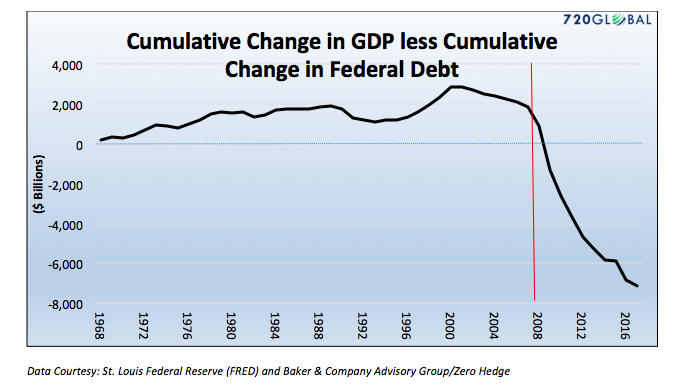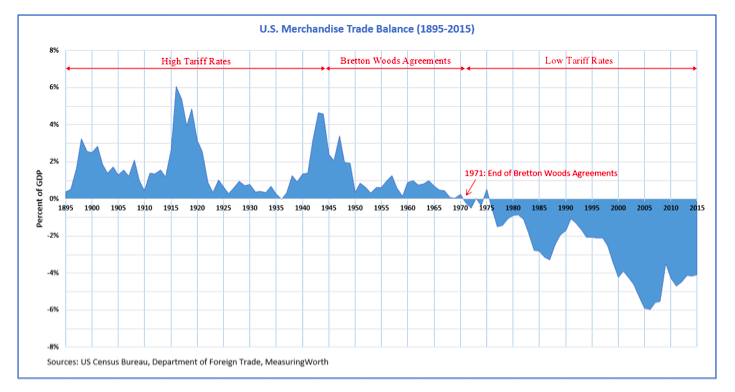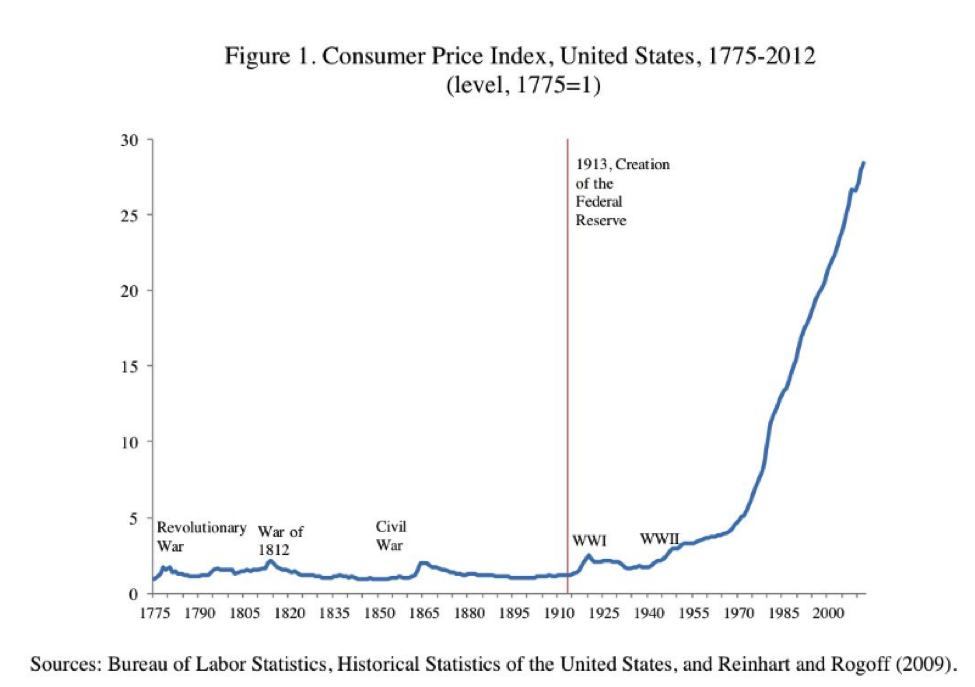Trade negotiations and threatening global tariff volleys are contributing to significant volatility in the financial markets. Although applicable in many ways, the Smoot-Hawley protectionist act of 1930 is unfairly emphasized as the primary point of reference for understanding current events.
In 1944, an historic agreement was forged amongst global leaders that would shape worldwide commerce for decades. The historical precedence of post-WWII trade dynamics offers a thoughtful framework for understanding why trade negotiations are so challenging. This article uses that period as a means of improving the clarity of our current lens on complex and fast-changing trade dynamics.
The following article was originally published to subscribers of 720Global’s The Unseen. I am now releasing it to the public to provide a glimpse of my coming service, RIA Pro.
Triffin Warned Us
“We are addicted to our reserve currency privilege, which is in fact not a privilege but a curse.” – James Grant, Grant’s Interest Rate Observer
Folklore states that Robert Johnson went down to the crossroads in Rosedale, Mississippi and made a deal with the devil in which he swapped his soul for musical virtuosity. In 1944, the United States and many nations made a deal at the crossroads in Bretton Woods, New Hampshire. The agreement, forged at a historic meeting of global leaders, has paid enormous economic benefits to the United States, but due to its very nature, has a flawed incongruity with a dear price that must be paid.
In 1960, Robert Triffin brilliantly argued that ever-accumulating trade deficits, the flaw of hosting the reserve currency and the result of Bretton Woods, may help economic growth in the short run but would kill it in the long run. Triffin’s theory, better known as Triffin’s Paradox, is essential to grasp the current economic woes and, more importantly, recognize why the path for future economic growth is far different from that envisioned in 1944.
I believe the financial crisis of 2008 was likely an important warning that years of accumulating deficits and debts associated with maintaining the world’s reserve currency may finally be reaching their tipping point. Despite the last nine years of outsized fiscal spending and unprecedented monetary stimulus, economic growth is well below the pace of recoveries of years past. In fact, as shown below, starting in 2009 the cumulative amount of new federal debt surpassed the cumulative amount of GDP growth going back to 1967. Said differently, if it were not for a significant and consistent federal deficit, GDP would have been negative every year since the 2008 financial crisis.
Bretton Woods and Dollar Hegemony
By decree of the Bretton Woods Agreement of 1944, the U.S. dollar supplanted the British Pound and became the global reserve currency. The agreement assured that a large majority of global trade was to occur in U.S. dollars, regardless of whether or not the United States was involved in such trade. Additionally, it set up a system whereby other nations would peg their currency to the dollar. This arrangement is somewhat akin to the concept of a global currency. This was not surprising, as a few years prior John Maynard Keynes introduced a supranational currency by the name of Bancor.
Within the terms of the historic agreement was a supposed remedy for one of the abuses that countries with reserve currency status typically commit; the ability to run incessant trade and fiscal deficits. The pact established a discipline to discourage such behavior by allowing participating nations the ability to exchange U.S. dollars for gold. In this way, other countries that were accumulating too many dollars, the side effect of American deficits, could exchange their excess dollars for U.S.-held gold. A rising price of gold, indicative of a devaluing U.S. dollar, would be a telltale sign for all nations that America was abusing her privilege.
The agreement began to fray after only 15 years. In 1961, the world’s leading nations established the London Gold Pool with an objective of maintaining the price of gold at $35 an ounce. By manipulating the price of gold, a gauge of the size of U.S. trade deficits was broken and accordingly the incentive to swap dollars for gold was diminished. In 1968, France withdrew from the Gold Pool and demanded large amounts of gold in exchange for dollars. By 1971, President Richard Nixon, fearing the U.S. would lose its gold if others followed France’s lead, suspended the convertibility of dollars into gold. From that point forward, the U.S. dollar was a floating currency without the discipline imposed upon it by gold convertibility. The Bretton Woods Agreement was, for all intents and purposes, annulled.
The following ten years were marked by double-digit inflation, persistent trade deficits, and weak economic growth, all signs that America was abusing its privilege as the reserve currency. Other nations grew increasingly uncomfortable with the dollar’s role as the reserve currency. The first graph below shows that, like clockwork, the U.S. began running annual deficits in 1971. The second graph highlights how inflation picked up markedly after 1971.
By the late-1970’s, to break the back of crippling inflation and remedy the nation’s economic woes, then Chairman of the Federal Reserve Paul Volcker raised interest rates from 5.875% to 20.00%. Although a painful period for the U.S. economy, his actions not only killed inflation and ultimately restored economic stability but, more importantly, satisfied America’s trade partners. The now floating rate dollar regained the integrity and discipline required to be the reserve currency despite lacking the checks and balances imposed upon it by the Bretton Woods Agreement and the gold standard.
As an aside, The Fifteenth of August discussed how Nixon’s “suspension” of the gold window unleashed the Federal Reserve to take full advantage of the dollar’s reserve currency status.
Enter Dr. Triffin
In 1960, 11 years before Nixon’s suspension of gold convertibility and essentially the demise of the Bretton Woods Agreement, Robert Tiffin foresaw this problem in his book Gold and the Dollar Crisis: The Future of Convertibility. According to his logic, the extreme privilege of becoming the world’s reserve currency would eventually carry a heavy penalty for the U.S.
Although initially his thoughts were generally given little consideration, Triffin’s hypothesis was taken seriously enough for him to gain a seat at an obscure congressional hearing of the Joint Economic Committee in December the same year.
continue reading on the next page…











